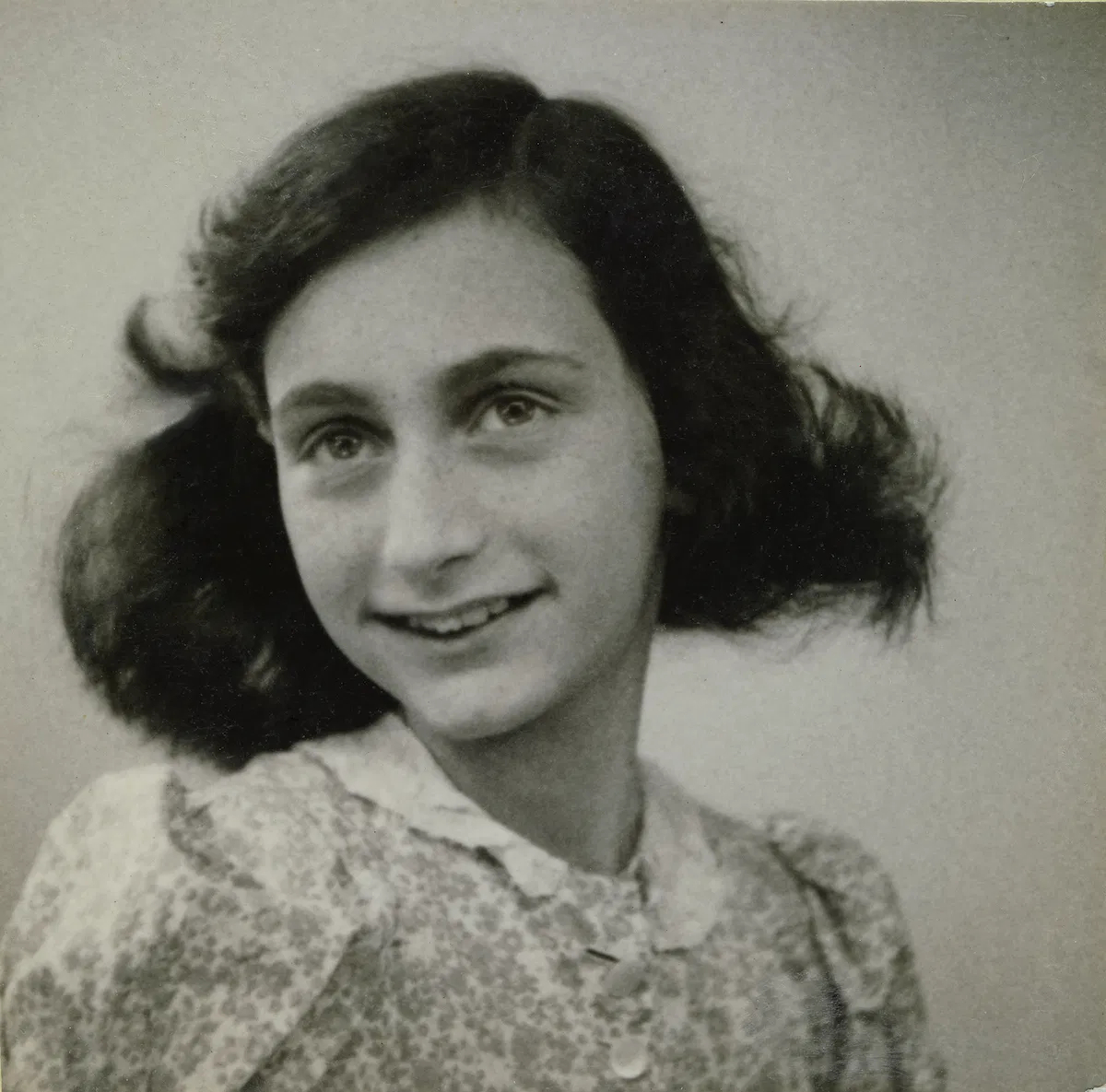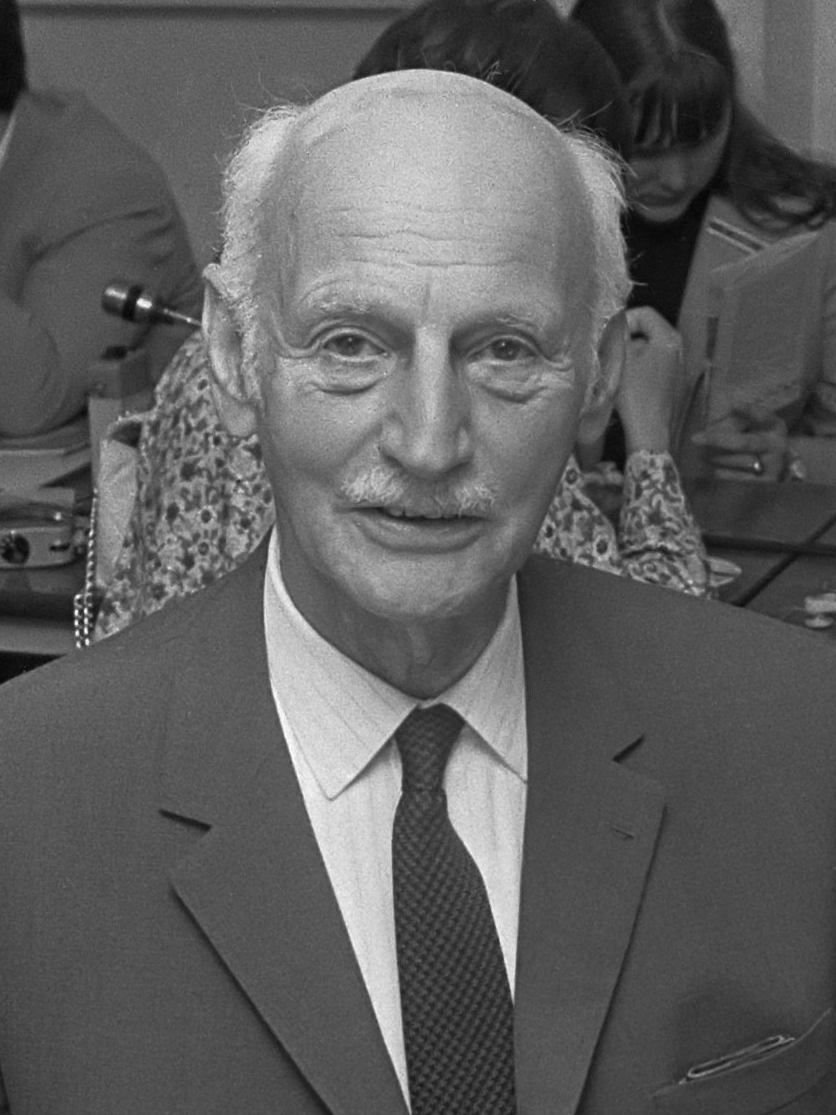“I hope I shall be able to confide in you completely, as I have never been able to do in anyone before, and I hope that you will be a great support and comfort to me.”

The last known photograph of Anne taken in May 1942, taken for a passport photo.
Her voice has come to symbolise the Holocaust, one victim among the six million who spoke for them all, a testament to all who perished with her.
Anne Frank died aged 15 in the Bergen-Belsen concentration camp in early March 1945, possibly the 7th.
Born on 12 June 1929, Anne and her elder sister, Margot, lived their early years in Frankfurt. But in 1933, following Hitler’s appointment as Chancellor, the Franks, as a Jewish family, became concerned for their safety as the Nazis introduced increasingly fanatical anti-Semitic legislation.
The Franks Move to Amsterdam
In late 1933 Anne’s father, Otto, was offered and accepted a business opportunity in Amsterdam. In February 1934 his wife and daughters joined him in the Netherlands. Of the half-million Jews living in Germany in 1933, about 320,000 had emigrated by 1939.
In May 1940 Hitler launched his attack against France and the Low Countries. Rotterdam was heavily bombed and, on 15 May, the Dutch, fearing further losses, surrendered.
Occupied Netherlands
Life for the Jewish population in Nazi-occupied Netherlands became increasingly intolerable and dangerous. In July 1942 Otto Frank received an order to report his eldest daughter for a work camp. The Franks, fearing for their lives, decided they had no option but to go into hiding.
On 6 July 1942 the Franks moved into their secret annexe, behind Otto’s business premises at 263 Prinsengracht, and in doing so left their flat in a state of chaos to give the impression of a family on the run. The annexe consisted of three floors, its entrance concealed by a large, wooden bookcase. They were to live in this self-imposed incarceration for over two years.
From the outside, the Franks were provided with food, provisions, news and humanity by a small group of trusted business associates of Otto’s. A week after moving in, they were joined by Hermann and Auguste van Pels and their 16-year-old son, Peter. On 16 November, they were joined by a German dentist and veteran of the First World War, Fritz Pfeffer.
Anne and Peter had a brief dalliance, which, although pleasurable, was, for such a young girl, confusing. For Anne, becoming aware of her sexuality but in such a confined and claustrophobic atmosphere and tainted with the lack of normality and the constant nag of fear, it must have been unbearably confusing and difficult. But there was always the solace and consolation of her diary.
The Diary
Anne had always shown a propensity to write and on her thirteenth birthday, a month before their flight, she received from her father an autograph book. With its thick blank pages, tartan cover and lock and key, Anne was delighted by her present and immediately began using it as a diary.
As with many a teenager, a diary is a constant companion and source of comfort, allowing the writer to express their feelings, their frustrations, their fears and hopes for the future, and their beliefs and changing attitudes. And so it was for Anne, an ordinary girl with an extraordinary talent, in extraordinary circumstances. The last entry in Anne’s diary is dated August 1, 1944:
Believe me, I’d like to listen, but it doesn’t work, because if I’m quiet and serious, everyone thinks I’m putting on a new act and I have to save myself with a joke, and then I’m not even talking about my own family, who assume I must be sick, stuff me with aspirins and sedatives, feel my neck and forehead to see if I have a temperature, ask about my bowel movements and berate me for being in a bad mood, until I just can’t keep it up anymore, because when everybody starts hovering over me, I get cross, then sad, and finally end up turning my heart inside out, the bad part on the outside and the good part on the inside, and keep trying to find a way to become what I’d like to be and what I could be if… if only there were no other people in the world.
Yours, Anne M. Frank
Three days later, on 4 August, Nazi security police, led by an Austrian called Karl Josef Silberbauer, burst into the annexe and arrested the Franks and their companions. They had been betrayed but by whom we will never know. The call was taken by Silberbauer’s commanding officer, a SS lieutenant called Julius Dettmann, who merely said the call had come from a ‘reliable source’. (Following the end of the war, Dettmann was arrested and interned as a prisoner of war. He committed suicide in July 1945). Otto Frank was giving Peter van Pels an English lesson when the Nazis entered the annexe. On seeing Anne, Silberbauer said to Otto, ‘You have a lovely daughter’. He couldn’t believe that the Franks and their friends had been in the annexe for over two years. As proof, Otto showed Silberbauer the pencil lines where he had charted Anne and Margot’s growth since 1942.
Auschwitz and Bergen-Belsen
The Franks, the van Pels and Fritz Pfeffer, the German dentist, were taken to a prison in Amsterdam, then to the Westerbork transit camp, in the northeast of the country. On 3 September 1944, all eight were deported to Auschwitz-Birkenau in Poland on the last train to leave the Netherlands for the extermination camp. Immediately, on arriving at Auschwitz, Otto was separated from his wife and daughters – he never saw them again. He did, however, remain with Peter van Pels, and was reunited with Pfeffer. Pfeffer died in Auschwitz on 20 December 1944 while Peter was put on a death march out of Auschwitz in January 1945 and died in Mauthausen, Austria, aged 18, on 5 May 1945, the very day the camp was liberated. Peter’s parents both died as well, his father gassed.
In October 1944 the girls were relocated to Bergen-Belsen whilst their mother remained in Auschwitz where she was to die from starvation.
Margot and Anne, already weak, deteriorated further and when a typhus epidemic swept through the camp killing almost 20,000 inmates, the sisters were amongst the victims. The exact date of their deaths is not known but it was early March 1945, just weeks before the camp’s liberation.
Otto and his daughter’s diary
 Otto (pictured), the only resident of the secret annexe to survive, returned to Amsterdam following the war knowing that his wife was dead but unsure of his daughters’ fate. He learnt, on returning home, of their deaths and received from friends Anne’s diary. This man, his life devastated by cruelty and inhumanity, sat down and read the secret diary of his deceased daughter.
Otto (pictured), the only resident of the secret annexe to survive, returned to Amsterdam following the war knowing that his wife was dead but unsure of his daughters’ fate. He learnt, on returning home, of their deaths and received from friends Anne’s diary. This man, his life devastated by cruelty and inhumanity, sat down and read the secret diary of his deceased daughter.
He read of Anne’s desire to be published, to be recognised as a writer and decided to devote the rest of his life to Anne’s work. He was to die in 1980, aged 91.
The diary was first published in the Netherlands in 1947 and five years later in the US and the UK. The name Anne Frank rapidly became known throughout the world.
Seventy years later and her name lives on, and Anne’s diary, recognised as a timeless classic, remains essential reading for all humanity.
 Rupert Colley.
Rupert Colley.
Read more about the war in The Clever Teens Guide to World War Two available as an ebook and 80-page paperback from Amazon, Barnes & Noble, Waterstone’s, Apple Books and other stores.